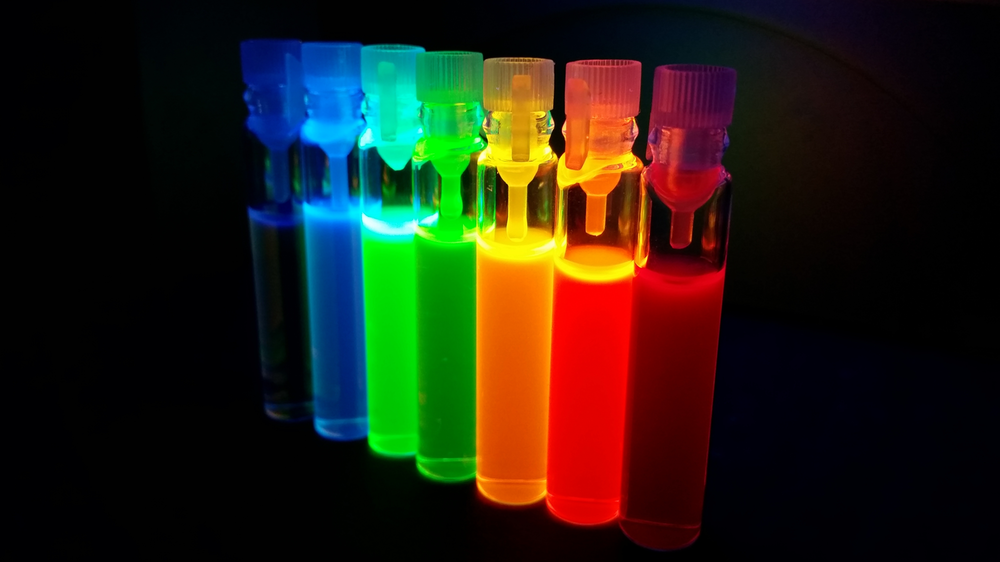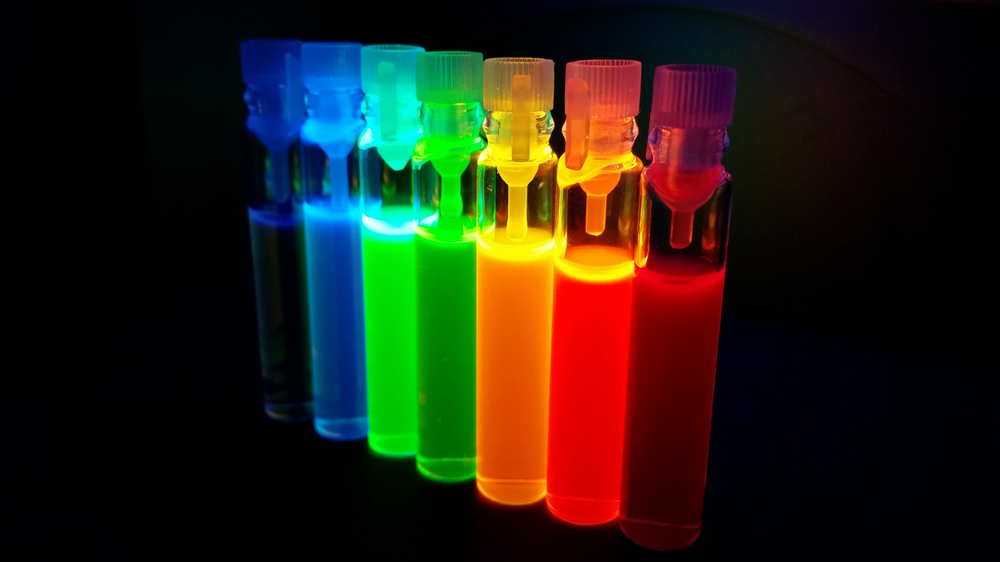Chemistry Nobel Prize: Quantum Rules Provide Controllable Colors
The 2023 Nobel Prize in Chemistry has been awarded to Alexei Ekimov of Nanocrystals Technology in New York, Louis Brus of Columbia University, and Moungi Bawendi of the Massachusetts Institute of Technology for their work on the development of nanoscale particles known as quantum dots: specks of matter so small that quantum effects make their size rather than their chemical composition the key determinant of their electronic and optical behavior. The award has left some mischievously asking if it is for chemistry or for physics. In fact, it’s a bit of both: quantum physics is needed to understand the properties of quantum dots, while ingenious chemistry is needed to make them.
Quantum dots are typically made from crystalline semiconducting materials and measure just a few nanometers across. So their electrons are tightly confined, and quantum-mechanical influences control the electrons’ energies. As a result, properties such as the colors of light the particles absorb and emit depend sensitively on the particles’ sizes and so can be finely tuned by precise control of those sizes. This tunability makes quantum dots valuable for color display technologies, nanoscale electronics, solar cells, and microscopic imaging techniques.
Ekimov, working at the S. I. Vavilov State Optical Institute in the early 1980s in what was then the USSR, first demonstrated size-dependent quantum effects in the optical properties of copper chloride nanoparticles dispersed in glass. The wavelength at which such semiconducting particles absorb light is determined by the separation (“gap”) between two ranges (or bands) of allowed electron energy. Ekimov and his co-workers altered the particle sizes by changing the temperature at which the particles were formed and showed that the smaller the particles, the wider the band gap and thus the higher the absorption frequency [1]. Such quantum size effects had previously been recognized in nanometers-thick films of semiconductors but not in discrete particles.
A few years later, Brus, then at AT&T Bell Laboratories in New Jersey developed methods for dispersing such nanoparticles in a colloidal solution. Brus’s team precipitated cadmium sulfide in solution in the presence of a polymer that stopped the tiny crystallites from growing and merging, leaving them just a few nanometers across [2]. Again, the smaller the size, the shorter the wavelength of the light they absorbed.
If the size of such colloidal nanoparticles could be controlled precisely, the absorption wavelength could be made to order. But making nanoparticles with well-defined and uniform sizes was challenging. Bawendi, working with colleagues at the Massachusetts Institute of Technology, cracked that problem in the early 1990s [3]. They grew the particles from organic compounds containing the desired elements (such as cadmium and sulfur) by injecting the compounds into a hot solvent. The heat broke the molecules apart, triggering the precipitation of nanocrystals measuring about 1 to 11 nanometers across; the exact size could be controlled by varying the growth time. This technique opened the door to large-scale synthesis of quantum dots with precise sizes and thus tailor-made colors.
Using this and related methods, researchers can now make a rainbow of quantum-dot solutions that emit and absorb at different wavelengths. In contrast to these “bottom-up” methods, quantum dots have also been made using a “top-down” approach: depositing nanometers-thick films on a surface and etching or carving them with electron beams into nanoscale islands [4].
Quantum dots are now used to make light-emitting diodes for color displays and TV screens. They’re also used for solar cells, in which light absorption stimulates the transfer of electrons to conducting materials [5]. They have transformed biological imaging because some quantum dots can be nontoxic and can be used to fluorescently tag specific biomolecules or structures inside living cells. Quantum dots are now the basis of an industry worth an estimated $4 billion.
“It’s a joy for me to see the beautiful field of quantum-dot research recognized with this Nobel,” says chemist Paul Alivisatos of the University of Chicago, founder of the company Quantum Dot Corporation, which develops nanoparticles for biological imaging. Alivisatos began his work in the field under Brus’s guidance at Bell Labs.
“I think it is a spectacular Nobel Prize,” says chemist Chad Mirkin of Northwestern University in Illinois, who has founded several companies that use nanoparticles for nanofabrication and diagnostics. “It underscores the central tenet in nanotechnology that everything is different when miniaturized. This should open a floodgate to prizes in nanotechnology and validates the big bet the world placed on nanotech 25 years ago.”
–Philip Ball
Philip Ball is a freelance science writer in London. His latest book is How Life Works (Picador, 2024).
References
- A. I. Ekimov and A. A. Onushchenko, “Quantum size effect in three-dimensional microscopic semiconductor crystals,” JETP Lett. 34, 345 (1981).
- R. Rossetti et al., “Quantum size effects in the redox potentials, resonance Raman spectra, and electronic spectra of CdS crystallites in aqueous solution,” J. Chem. Phys. 79, 1086 (1983).
- C. B. Murray et al., “Synthesis and characterization of nearly monodisperse CdE (E = sulfur, selenium, tellurium) semiconductor nanocrystallites,” J. Am. Chem. Soc. 115, 8706 (1993).
- M. Reed et al., “Observation of discrete electronic states in a zero-dimensional semiconductor nanostructure,” Phys. Rev. Lett. 60, 535 (1988).
- D. Bera et al., “Quantum dots and their multimodal applications: A review,” Materials 3, 2260 (2010).





